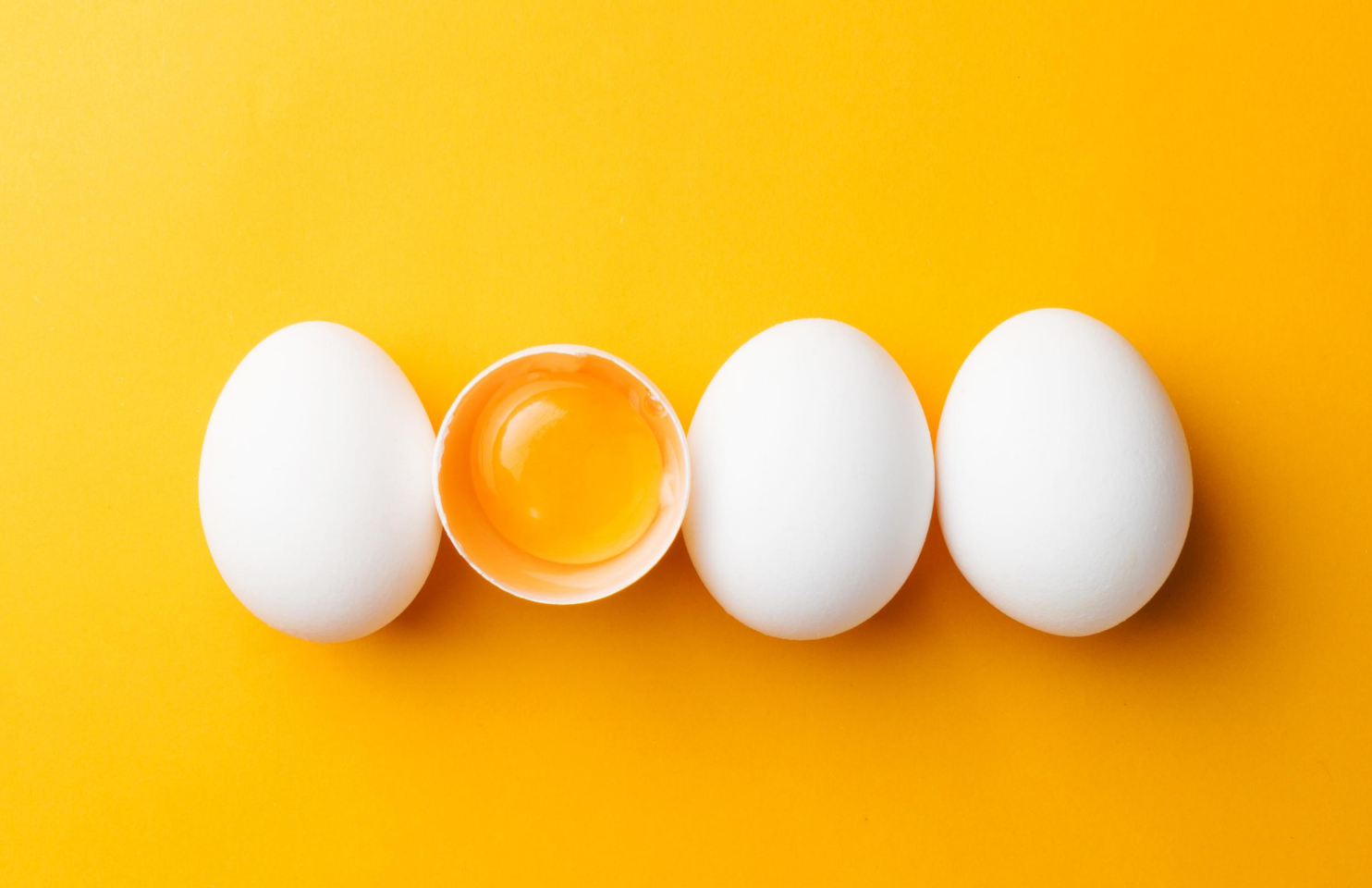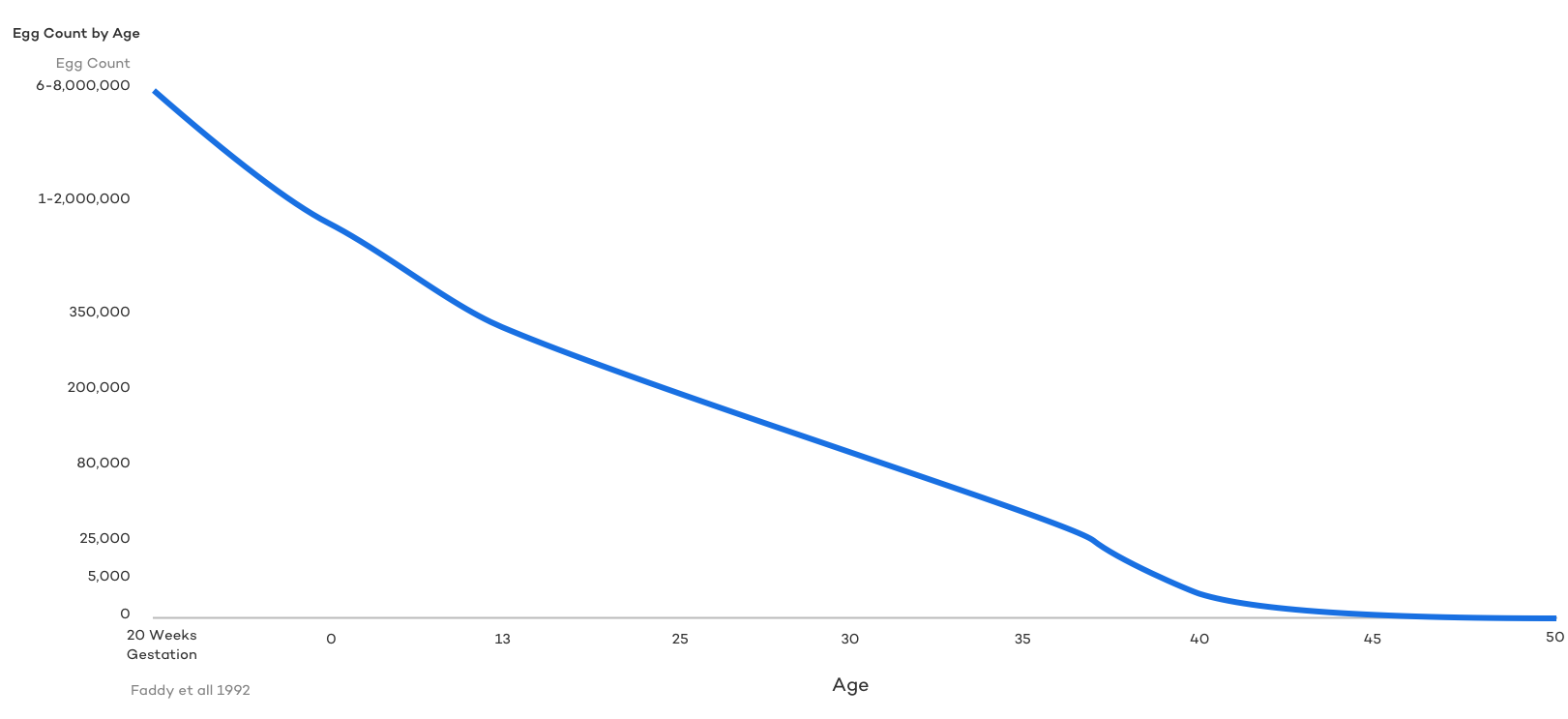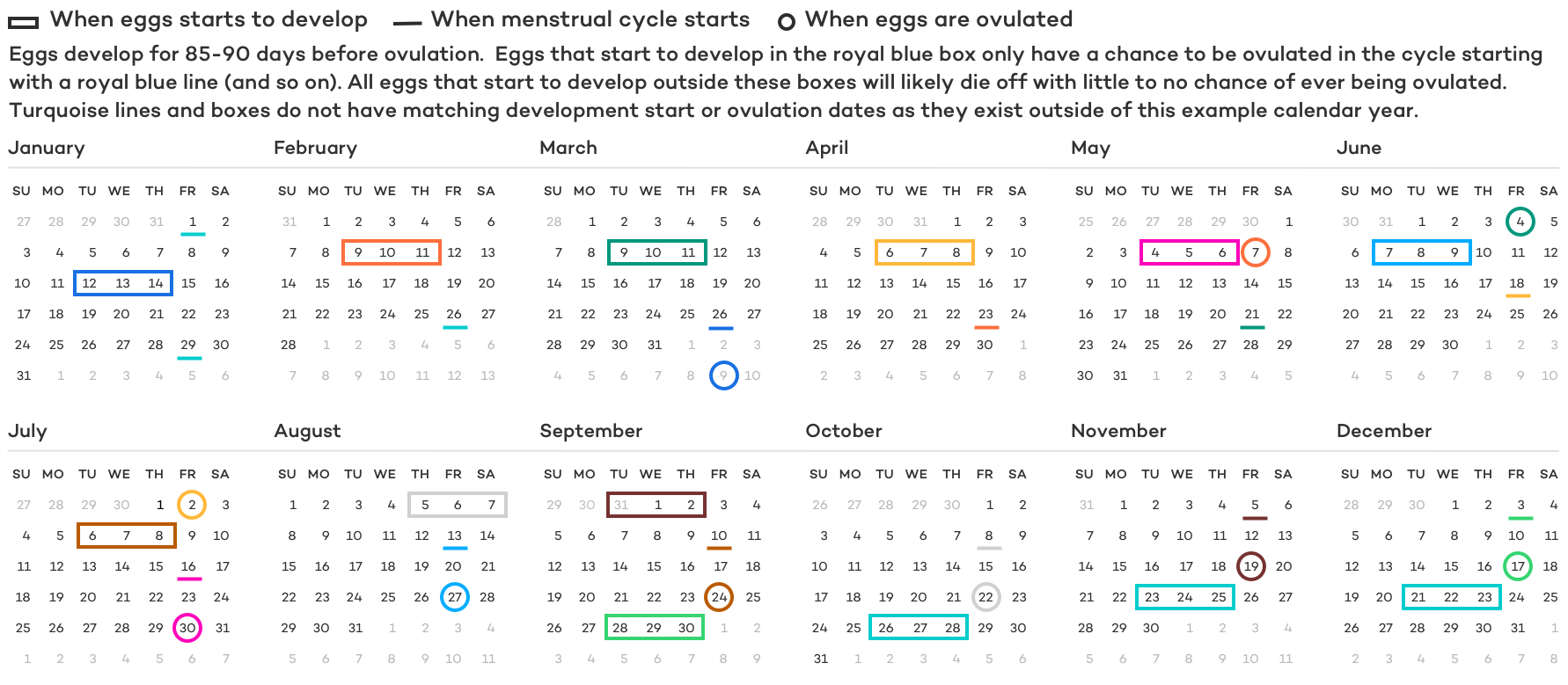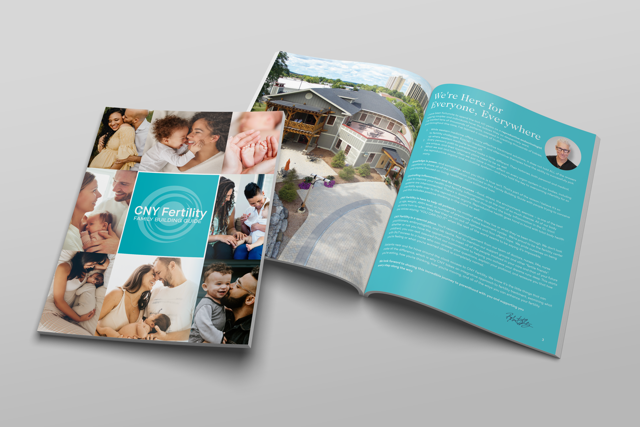How Many Eggs Does a Woman Have?

When talking about female fertility, particularly with those interested in egg freezing, one of the most common questions asked is, “how many eggs does a woman have?” Or, more specifically, “how many eggs do I have?” That’s a good question, but the answer is highly dependent upon what time in the woman’s life you are talking about as well as individual variances. And because there is so much natural variation between women, it’s important to know what you can do to test your own egg reserve. And what about egg quality? Are quantity and quality-related?
Those are all great questions, so let’s get started.
Fast Facts
- The peak number of eggs a woman ever has takes place at about 20 weeks of gestation (before they are born and still inside their mother’s womb). At this point, they have roughly 6-8 million eggs. No new eggs will ever be made from this point on.
- Egg cells are constantly degenerating and go through a cell death process known as atresia.
- Starting with puberty, a new batch of eggs are selected every day to start developing. The number of eggs that leave the “waiting pool” each day is highly dependent upon the age of the woman.
- During peak reproductive years, roughly 30-40 eggs will leave this waiting pool and start to develop each day (a thousand a month). Of these, only 1/10th will enter a menstrual cycle and typically only one egg is developed fully and ovulated.
- Because many eggs start to develop but die off before being ovulated, a woman goes through roughly 300,000-400,000 eggs in their reproductive years, but only ovulates 300-400 eggs.
- The average woman runs out of eggs and starts menopause around the egg of 52.
- Egg quality, though not directly related to quantity, is correlated. As a woman ages, both their egg quality and quantity generally decline.

How Many Eggs Does a Woman Have at Birth?
A woman is typically born with around 1-2 million eggs in their ovaries . Unlike men who are always producing new sperm to replenish their sperm count, females stop making eggs. What’s even more unexpected is that females will have produced all they eggs they will ever make by 20-weeks of gestation (halfway through the pregnancy). Usually, that number is around 6-8 million.
How Many Eggs Does a Woman Have At Puberty?
Even though a female doesn’t typically start menstruation and have the ability to get pregnant until they are between the age of 10-15, eggs are constantly degenerating and being lost throughout infancy and adolescence. As a prepubescent female, approximately 10,000 eggs will degenerate and “die” each month. That means by the time a woman reaches puberty, they only have 300,000-400,000 eggs left in their ovaries .
How Many Eggs Does a Woman Have at 30?
Of course, there is a great deal of variation in women; some are tragically diagnosed with primary ovarian inefficiency (POI aka premature ovarian failure) in which a woman runs out of eggs while in their 20s or 30s, while other women are blessed with an incredibly high ovarian reserve even well into their thirties and even forties.
Of course, when speaking generally about how many eggs a woman has in their 30s, we’re talking averages and estimates. Women in their early thirties are generally better off than women in their late thirties as ovarian reserve declines sharply in the late thirties. For example, a woman at 30 often has around 100,000-150,000 eggs in reserve. By 35, that number is likely around 80,000. Late into the thirties, that number could be 25,000, 10,000, or fewer.
How Many Eggs Does a Woman Have at 40?
After the rapid decline in egg count starting around age 37, by the time a woman hits 40, their ovarian reserve is often estimated to be around 5-10,000. But again, there are no one-size-fits-all answers here. While the chance of getting pregnant in the 40s is generally quite low, there are women who conceive naturally well into their 40s and even more who do so with IVF or donor egg IVF.
How Many Eggs Does a Woman Have at 50?
By 50, women are likely to only have a few hundred if any eggs left at all. The average age of menopause is around 51-52 years of age, though smoking and other factors may cause the onset of menopause earlier . Chemotherapy and radiation notably have a very toxic effect on egg quantity.
When eggs run out, the ovaries cease to make estrogen, and the woman will start menopause.
What Happens to All the Lost Eggs?
As you just read, a woman in the height of their fertility loses roughly 1,000 eggs every month but only ovulates one. Nobody knows exactly why evolution hasn’t found a more efficient way to develop eggs, but let’s cover what we do know so we can at least begin to understand what happens to those 999 eggs that are lost every month.
- Each day 30-40 eggs are recruited from the waiting pool and start to develop. At any given point, there are roughly 500-1000 eggs being developed.
- Eggs take roughly 85-90 days to develop from the time they are recruited from the waiting pool to the time of ovulation (if they are so lucky). 70 or so of these days take place before the menstrual cycle in which the egg can be ovulated.
- Eggs become sensitive to FSH (the hormone that stimulates the final leg of this development) around 70 days after leaving the waiting pool.
- At the end of a woman’s menstrual cycle and into the start of the new cycle, there is an increase in FSH.
- An egg that started its developmental journey around 70 days prior should now be responsive to FSH and be pulled into the menstrual cycle for the final leg of development and chance to be ovulated.
- Eggs recruited much more than 70 days earlier would have withered away and died by this point.
- More recent eggs would not yet be sensitive to FSH and would continue to develop. If an egg is about “50 days old” at this by the next cycle, it will be nearly 80 days old and will have died off. Eggs that are around 40 days old would be around 70 days old next cycle and could have a chance to be responsive to FSH and be pulled into the next menstrual cycle.
- This means that eggs only have a shot at reaching ovulation if they start their development in a small window of days (about 1/10 of all days). Eggs that leave the waiting pool in other days will likely not be pulled into the final phase of development by FSH or have a chance of ovulation.
Now that we’ve got that down, let’s take a look at the good ol trusty doodled on calendar with doodles to help make sense of this.

As you can see, only eggs that leave the waiting pool in this small window – approximately 70 days prior to the start of any given cycle – have even the slightest chance of being chosen as the egg which will ovulate.
The exact number of eggs that leave the “resting pool” each day (and thus would be ready to make the final stage of development 70 days later if it aligned with the rise in FSH at the end of a cycle) is highly dependent upon the female’s age. When a woman is in their teens or twenties, she may have an average of 30-40 eggs leave the resting pool each day. A woman in their late thirties may only have ten eggs leave this resting pool each day.
Interestingly, one of the key reasons why IVF works so well is that the hormones taken during IVF “save” a large number of those eggs that are around “70 days old” at the start of the cycle. In a natural cycle, one of the 100 eggs/follicles has more FSH receptors than all the others and quickly outgrows the others; this essentially marks it as the egg to be ovulated. During an IVF cycle, FSH is administered in such high levels that those other 99 follicles with less FSH receptors can be “tricked” into fully developing by being saturated with FSH at every receptor they do have. In this way, IVF allows women to produce upwards of 100 eggs each month (of course, that is an “ideal” situation and IVF typically only yields 5-30 mature eggs).
How Do I Know How Many Eggs I Have Right Now?
Unfortunately, there is no foolproof way to know exactly how many eggs you have or how good they are. That said, Fertility doctors have tricks (tests) to give you an idea of how many eggs you might have.
- Bloodwork: An anti-Müllerian hormone blood hormone test measures the amount of AMH in your blood. AMH is produced by cells inside the follicles and helps doctors estimate the number of eggs inside the ovaries and how you might respond to fertility medications. The higher your AMH level, the more eggs likely you have in reserve. An average AMH level for a fertile woman is somewhere in the 1.0–4.0 ng/ml range but can vary quite a bit depending on age. Interestingly enough, AMH is not stable month over month, so it doesn’t provide a definitive answer. There is also lots you can do to improve your fertility and AMH numbers.
- Transvaginal Ultrasound: Your doctor can perform an ultrasound for an antral follicle count. This involves counting the visible follicles seen using the ultrasound. Each follicle contains an immature egg that could mature and potentially ovulate. By seeing how many follicles exist in the mantra follicle count, a medical provider could extrapolate and give you an estimate for how many eggs you may have overall. Remember, younger, more fertile women release more eggs every day from the waiting pool and thus would likely have more follicles when performing an antra-follicle count.
Are Egg Quality and Quantity Related?
While they are certainly not married to each other, there are some correlations between both age and egg quantity and age and egg quality. Unfortunately, there is no real measure of egg quality as there is egg quantity. The only real way to tell is to fertilize an egg and determine if it fertilizes, develops into an embryo, and either test the embryo using Pre-implantation Genetic Testing or if the embryo develops into a fetus and healthy baby.
One study shown below clearly shows that the number of abnormal embryos (and thus likely abnormal eggs and poor egg quality) goes up drastically as a woman ages.

While they are in no way guaranteed to go hand in hand, there is substantial evidence that the average egg is of poorer quality as age goes up, and ovarian reserve goes down.
Bottom Line
Women have all the eggs they will ever have while at about 20 weeks gestation (while they are a fetus inside their mother’s womb). At this point, they will have roughly 6-8 million eggs, and from there on out, their egg count is in constant decline due to natural processes. By the time a woman is born, they have 1-2 million eggs remaining, and by the time they hit puberty, they have around 300,000-400,000 eggs.
In a woman’s reproductive years, they will lose roughly 1000 eggs but ovulate only one egg each month. If you’re asking how many eggs a woman has, that answer depends largely on their age, toxic exposures like smoking, chemotherapy, and radiation. But because there is so much natural variance in the population, testing can be done to help approximate how many eggs you may have left. And if you think a dwindling egg count may be a concern, egg freezing is a medical treatment that can help preserve your fertility.


